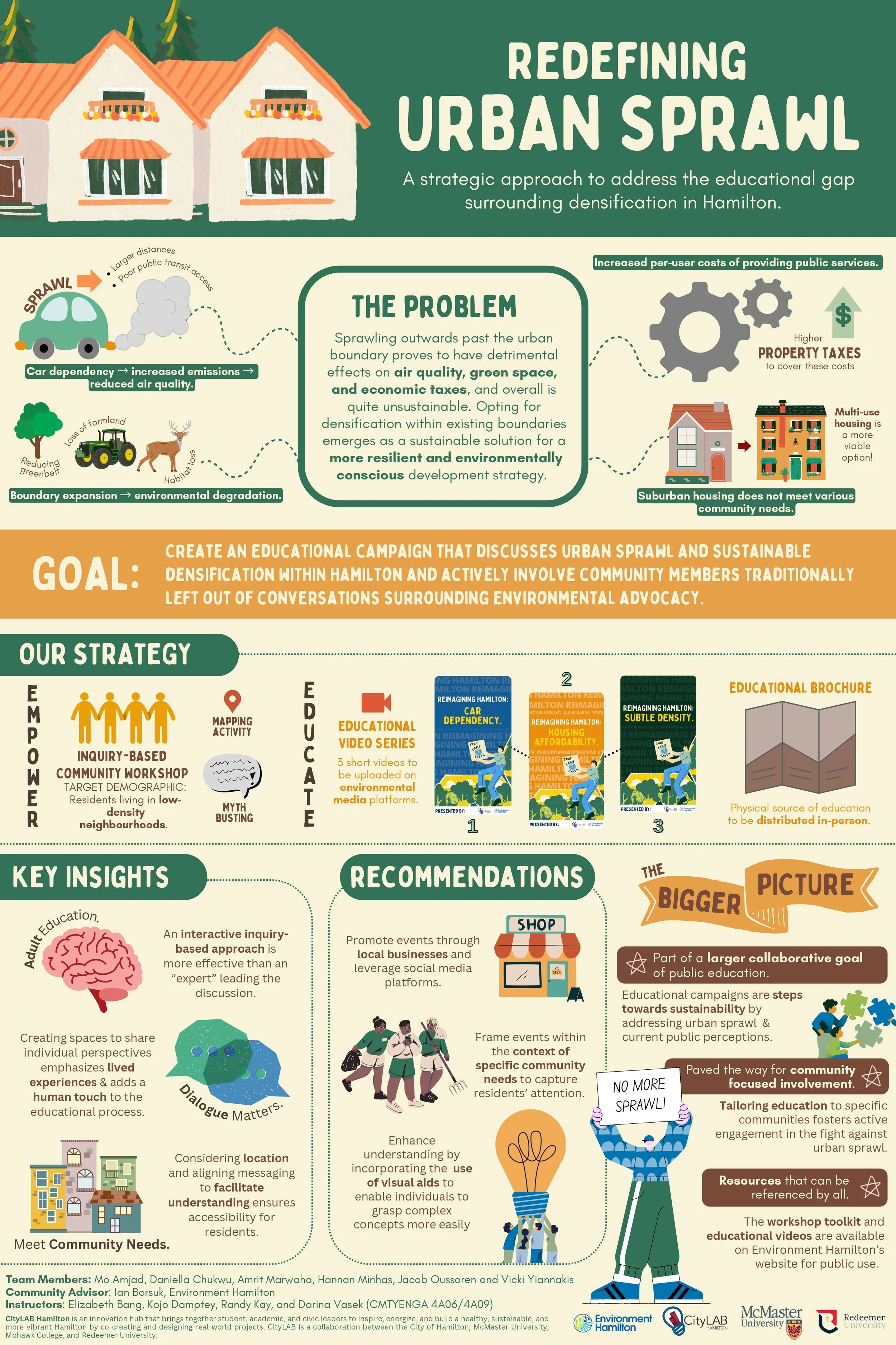How might we identify problems surrounding urban sprawl and create a public education tool that addresses Greenbelt protection and the intersection of land use and environmental protection?
Context:
In Hamilton, over 1900 acres of greenbelt land is at risk for urban expansion due to Bill 23. Hamilton residents and the City Council want a progressive and viable urban growth management plan to freeze our boundary and accommodate growth within our existing urban area.
Problem:
Following Doug Ford’s re-election, the city outlined new policies to guide development until 2051, which required planning for increased housing units to accommodate a projected growth of 236,000+ individuals.
Although single-family detached homes require less-skilled labor, cheaper materials, and lower development fees, they remain financially unsustainable for residents in Hamilton.
The benefits of higher-density, affordable housing and improvements to community infrastructure are not appropriately communicated with residents (particularly in areas with low density → Ward 5, Stoney Creek, Outer Downtown, etc.)
Additionally, there is a shortage of affordable housing for residents
Overall, there exists an educational gap surrounding higher-density housing options for Hamiltonians.
Project Summary:
We will be developing one public-facing educational agenda to help Environment Hamilton address urban sprawl and the loss of the Greenbelt. This will look at integrated development and promoting density within lower-density neighborhoods in the urban boundary. We will take into account the variety of opinions on this issue and try to find ways that we can reach people who currently are not involved in this issue. We will incorporate aspects of economics, policy, and environmental justice into a curriculum to help us synthesize and deliver this educational, environmental curriculum to our target demographic of homeowners in low-density areas like Ward 5, Stoney Creek, Outer Downtown, etc., through in-person interactive seminars and informational brochures.
Goals:
Data Collection and Analysis
To obtain data on the current state of low-density neighborhoods, including current infrastructure housing conditions and community needs. This will be accomplished by retrieving past/current community surveys, census, and reports, alongside the creation of surveys and feedback reports for these community members to obtain data in real time. Our primary resource in this component will be Environment Hamilton and the City of Hamilton.
Collaborate with Relevant Stakeholders
Establishing partnerships with relevant stakeholders including City Council members of wards that contain low-density neighborhoods, Environment Hamilton, housing advocates, urban planners, and housing development companies. Maintaining relevant communication with the common goal of having sustainable solutions for low-density neighborhood revitalization.
Community Engagement and Participation
To actively engage and involve community members in dialogues, planning sessions, and feedback surveys to ensure their voices and opinions are heard and considered.
. Raise Awareness and Education
To inform and educate residents in low-density neighborhoods about the benefits and reasons for revamping these neighborhoods to accommodate housing needs and emphasize the importance of preserving the Ontario Greenbelt.
Students: Vicki Yianakis, Jacob Oussoren, Hannan Minhas, Amrit Marwaha, Mo Amjad, Daniella Chukwu
Staff: Ian Borsuk (Environment Hamilton)
Instructor: Kojo Damptey, Darina, Vasek, Elizabeth Bang, Randy Kay



